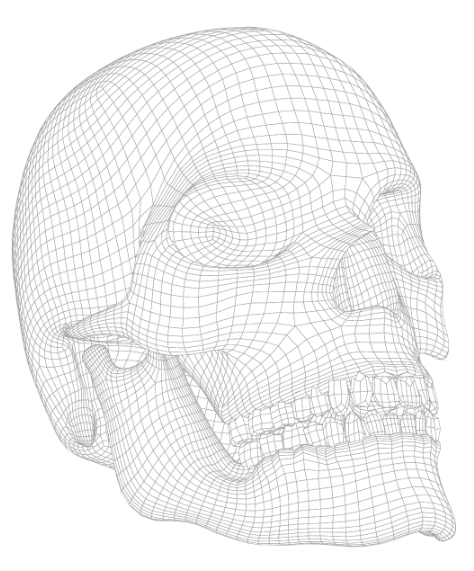
In this article, I will summarize for you everything you need to know about the layers of the face. But first we need to understand why the knowledge about fascial layers is so important and so relevant for your daily clinical practice.
The subdermal structures are highly organized and follow certain rules of arrangement. Knowing that there are layers allows one to appreciate that there is depth i.e. the third dimension. Humans are not 2-dimensional but instead 3-dimensional.
Every fascial plane contains specific structures like arteries and nerves and forms at the same time boundaries for specific regions (deep plane vs. superficial plane). For instance, the superficial temporal artery travels inside the superficial temporal fascia. This knowledge means that one can place soft tissue fillers on top of that fascia and below that fascia without compromising the artery.
Fascial planes can provide guidance and support for your clinical treatments. In surgery, knowing the fascial plane will allow you to reach or to resect certain structures without damaging others. In facelift surgery, dissecting in a certain plane away from the facial nerve is crucial.
However, this is unfortunately only half of the story. As you can imagine it is more complex; especially because some structures like facial muscles do not care about fascial planes. Most of them originate from the bone and insert into the skin. The same is applicable to injectable products for the face. They almost never stay in their originally implanted plane but move and migrate instead. Very unsatisfactory!
But first things first.
Let us summarize the various fascial planes by facial region:
Scalp: 5 Layers
Forehead: 8 Layers
Temples: 10 Layers
Lateral infraorbital region: 7 Layers
Tear trough: 3 Layers
Nose: 5 Layers
Lateral Midface: 7 Layers
Medial Midface: 8 Layers
Jawline: 6 Layers
Chin: 5 Layers
As you can see, the standard 5-Layered arrangement that everybody talks about is highly variable with a range from 3 to 10 layers. Depending on the facial region, different layers can be expected. But more important than just knowing a number is understanding in which of those planes vital and endangered structures are travelling to be able to adjust treatment strategies accordingly.
Let me give you some examples: In the nose, the majority of the arterial vasculature is travelling inside the superficial fatty layer = Layer 2. Injecting soft tissue fillers into this plane would most likely cause severe adverse events if the HA product gains access to the arterial vascular system; therefore, nasal enhancement treatments should be conducted in the deep plane = Layer 4. Along the jawline, the facial artery travels in the supraperiosteal plane = Layer 5; treatments of this facial region to increase jawline contouring should focus on the superficial fatty layer = Layer 2, playing hide and seek with the artery.
Understanding these differences, that one region can be targeted in one specific plane, but this same plane in another facial region can cause severe adverse vascular events, is what differentiates good clinical outcomes from less favorable ones. Knowing these differences is what anatomy can support you with and be of guidance. However, the general understanding of fascial layers, as described above, assumes that all of them are parallel to the skin surface.
This is the case for the temples, jawline, forehead, and lateral midface. But for other facial regions like the medial midface this parallel arrangement is not applicable. In the medial midface the layers are obliquely arranged similar to roof tiles of a house or the scales of a fish. They are anchored deep and terminate superficially.
The structures that determine this specific oblique arrangement are the facial muscles. They originate from the bone and insert into the skin. And exactly this is what changes the parallel arrangement to an oblique arrangement which we can observe in the medial midface.
In summary, the number of fascial layers varies per facial region, and it is not always parallel to the skin surface. The latter also influences the pathway of various facial neurovascular structures.

Become part of our community and receive news, special offers and information about Cotofana Anatomy’s products and services.
Copyright © 2025, Cotofana Anatomy. All rights reserved.